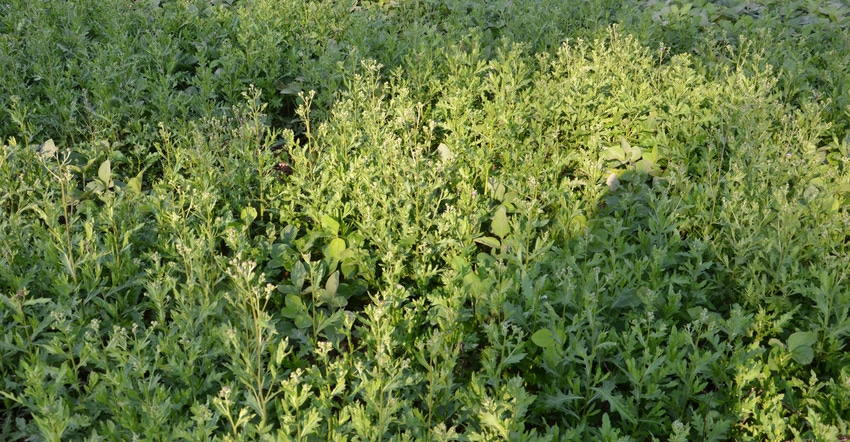
If you plan to apply a new dicamba herbicide, you must attend training. The Office of Indiana State Chemist records who attends sessions. Skipping training isn’t an option. It’s required under updates agreed to by manufacturers and announced by the U.S. EPA last fall.
Here are six key points gleaned from attending a training session led by Scott Gabbard, Shelby County Extension ag educator, in Johnson County, Ind.
1. If weeds are more than 4 inches, product performance is not guaranteed. You can still apply the herbicide, and you may kill weeds taller than 4 inches. However, Gabbard says the maximum height of weeds where control is guaranteed by the manufacturers is shorter than you will hear others talk about, and perhaps even see yourself.
2. More than 90% of dicamba complaints verified by OISC resulted in violations. At the time of this training session, 68 of 129 dicamba complaints were completely investigated. Sixty-three resulted in violations. It was a banner year for drift, with OISC receiving 257 total official complaints. The previous record was just over 100, counting dicamba complaints.
3. Failure to check websites was the leading cause of violations. Some 81% of the violations to date were due to not checking one or both websites as required by labels. The good news is this is an easy violation to fix in 2018 — check websites! Gabbard says you must check both the product website and Driftwatch. The Driftwatch website contains information local people post about the location of sensitive crops. You must check the product label website within seven days of application.
4. Applying with the wind blowing toward a sensitive crop was the next most common violation. Just over four of 10 violations involved applications made when the wind was blowing toward a sensitive crop. While not included on Driftwatch, soybeans sensitive to dicamba are considered a sensitive crop, Gabbard says.
5. Label changes tighten wind restrictions for 2018. Some 16% of the violations so far related to spraying when the wind was above 15 miles per hour. The new label for 2018 limits top wind speed to 10 mph, with gusts not above 13 mph. Only 3% of the violations were linked to applying when it was too calm, with wind below 3 miles per hour.
6. Acceptable spray hours in June were limited in 2017. Weed scientists checked the number of hours you could have legally applied these products under the 2017 label at the Purdue Agronomy Research Center near Lafayette in 2017. It was a surprisingly low number, with several days completely blocked out. If 2018 rules had been in effect with 2017 conditions, there would have been even fewer hours.
“Some thought that was an unfair comparison, since 2017 was a tough season,” says Matt Pearson of OISC. Purdue Extension weed specialists looked at conditions for the previous five years to find an average. Matching 2018 rules to the averages increased available hours for spraying somewhat, but there were still many hours when you couldn’t spray, Pearson says.
For more points made during this training session, read the second part of this three-part series, and watch the website for the final installment.
About the Author(s)
You May Also Like




